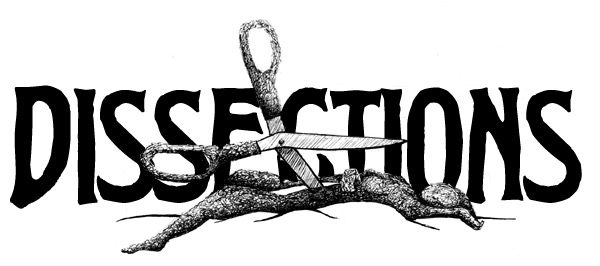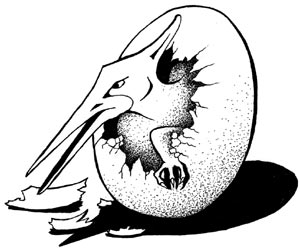[an error occurred while processing this directive]


Review of The Vampire Film:
Undead Cinema (Short Cuts) Jeffrey Weinstock
Gina Wisker
Wallflower Press (May 29, 2012), 144 pages
ISBN-10: 0231162014
ISBN-13: 978-0231162012
Undead Cinema is a valuable addition to Jeffrey Weinstock’s growing range of scholarly and readable critical works on horror and the Gothic, which include Spectral America (2004) and most recently The Ashgate Encyclopedia of Literary and Cinematic Monsters (2014).
This book engages with the underpinning theories, the trends and many of the essential films of vampire cinema. Undead Cinema argues that the uncanny medium, the cinema, is ideal for the constantly shifting vampire figure.
It is essential reading for anyone interested in vampire cinema.
There have been many books on vampire films, mostly heavily
illustrated, relying on introductory information about dates and plot
and the usual photos of our fanged familiars. These are coffee table
books and I suspect while Dissections readers and writers will
have Jeffrey’s book on their coffee table (if you have a coffee
table), along with Ken Gelder’s Reading the Vampire (2002)
and Nina Auerbach’s Our Vampires Ourselves (2001), most
of the readership will be students, popular readers and others lucky
enough to study, teach and talk about vampire film, fascinated not only
with the variety and development of the films but the questions Why?
What? and so what? (what does it all mean?) The Vampire Film: Undead
Cinema (Short Cuts) addresses the questions about our perennial
fascination with the vampire in fiction and cinema and reasons for their
morphing with time, context and message.
The book is in five parts: Introduction: vampire cinema; 1 vampire sex;
2 vampire technology; 3 vampire otherness; coda: vampirising genre.
It begins with a focus on the highly intertextual Blade: Trinity (2004), which theorises the vampire for us, intertextually situates itself in relation to other vampire texts, and weaves in both the explicit referencing to historical vampires as in previous vampire films, seeing Drake as an authentic and resilient vampire. It also subtly integrates the historical context of the moment in the statement that this vampire comes from Iraq, thus referencing the American invasion in 2003. In a sense, this is a model for some of the major arguments in the book. Vampires in film and fiction tend to shape-shift into carrying contemporary culturally contextualised resonance, and each vampire film is haunted by all those which precede it, so much of our delight is recognising the nuances and the metamorphoses of the film history. If you lack the film history, The Vampire Film: Undead Cinema is a good place to find it. In Blade: Trinity, as in many other vampire texts, the vampire of the moment can indicate a range of terrors – of foreign intrusion and invasion, and/or of women’s sexual emancipation and agency. Dracula (1897) is of course the most familiar model for this, written at the height of the British Empire and the New woman era, re interpreted each time for the terrors of the time, it was/is made into a film – so it is an eternal love story in the 1992 Coppola version and a voyeuristic warning against lascivious women when produced by the Hammer studio.
The romance and vampires all morph by the time of the four Twilight films (2008-2012) which emphasise romantic high school love, clans, family values and mothering, as well as offering a few rendings, battles and the odd extra love triangle with a werewolf. Vampire films, however shapeshifting with time, place and message, are also spliced with a variety of other genres, thrillers, adventures and occasionally consciously (more often unconsciously) comic elements, of which the first, The Lost Boys (1987) is a case in point. So, a main argument throughout is that: ‘Although vampires in movies are depicted as quasi-immortal creatures, the vampire cinema shows us that cinematic vampires are inevitably products of their historical moment, and although vampires in films like Blade: Trinity may have gone global, the expression of underlying fears and desires concerning sex and race and the human relationship with technology is always local – culturally specific and time-bound.’(p. 3) While another main message, most useful for teaching any fantasy, Gothic, scifi or speculative fiction or film is ‘speculative media-horror, fantasy and science fiction no matter how seemingly distant from the ‘real world’ they appear, are inevitably anchored by history and are the products of converging links of historical forces’.
Moments of construction and consumption are important for the vampire cinema. This provides a nice tension between the historically contextualised, realistic, politically and culturally topical and relevant, and the vampire’s own immortality and performativity, between the time-bound and the timeless, emphasising both the ways in which vampire cinema, like vampire fictions, can vehicle, comment on and respond to, can expose the fear and desires of a particular time and place and also offer imaginative distance from these – a movement of defamiliarisation that enables those who read the films to engage with the issues.
Jeffrey Weinstock’s principles of the vampire cinema are also useful ways to tie down momentarily the themes, concerns and familiar troubling elements of vampire cinema. For example, in one way or another, the vampire is always about sex and violence, the vampire is always more interesting than those who pursue it, and they always return, because they are our own creations. Their tendency to cross a wide range of borders is also noted and of these are not merely between life and death, since in more contemporary vampire films there is a ‘geographical transnational mobility’.
The chapter on vampires and sex argues that vampires embody transgressive, taboo sexuality and also teach us about normativity through offering examples of the perverse. This sense of the excessive, or the perverse is seen as much in Theda Bara’s early portrayals in A Fool There Was, as in the role of Edward in the Twilight films. Edward’s achievement of a contemporary male ideal is itself excessive.
It might be worthwhile looking further at the attraction of the perverse, and at the lure of alternative ways of being offered by the vampire figure and wondering whether this is always about returning us to a more restrained, realistic, normal, a reading which might shut down some of the vampire’s energy for offering agency and alternative ways of reading situations and of being, so that it imagines ahead perhaps rather than projects in order to trouble then shut down. This surfaces in the discussion about the lesbian vampire, of whom, it is asked, can they function to undermine rather than reinforce repressive attitudes to alternative or other sexualities, taking a trio of films released in 1971 as examples. Weinstock shows that each ultimately tries normality and cannot invest in alternative sexualities, largely based on lesbian vampires being ostracised in reaction to male sexual fears, seeing lesbians as sterile. In Vampyros Lesbos (a Hammer film) audiences are offered a fascinating spectacle of lesbian sexuality, more of a male construct for a male consumer. If this focus on the lesbian and the radical female vampire were taken a little further, the book might wonder where the films are of those radical celebratory feminist vampires of the 1990s – 21st century – their construction is largely in fiction, not yet in film.
The chapter on vampire technology and science more generally looks at films such as I Am Legend, outbreak films, technology and science reading of infection, vampirism as unstoppable sickness. Not surprisingly, a great deal of space is devoted to the remakes of Dracula, each in their own time and with their own concerns.
What I like about the book is that it is unpretentious
and accessible yet built on a very wide and insightful reading of a
broad range of vampire films. The book is both fluent in the critical
discourses and theories behind vampires and cinema, and accessible to
a student readership, which is fitting for a book in this series i.e.,
‘short cuts’, instructions to elements of the genre. I agree,
we are all ‘vampire textual nomads’, watching all vampire
films intertextually as we watch each one – a fascinating idea
of return. The text moves through issues of racism and a range of contemporary
obsessions and panic to end on the closure that while the vampire is
contextualised and endlessly predatory, we all always get the vampire
we deserve at any point, and it always gets us.
**************************************************************************
